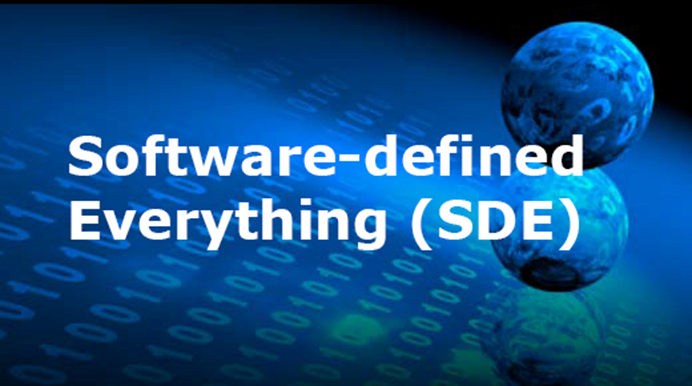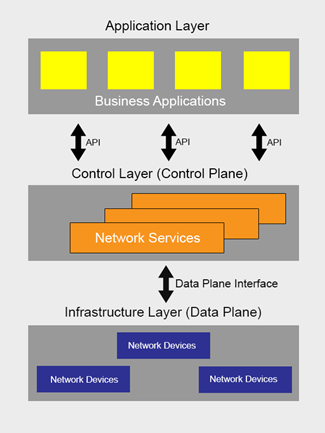
In 2016, Gartner, a research firm presented Software-defined Everything (SDE) as a key technology trend for 2016. But some years later, still this technology is a tricky concept to grasp. Theoretically, SDE is defined as decoupling of software from specific hardware platforms. In practical situations, it gives more programmability to the IT infrastructure. For an instance, business organizations have to respond to the frequent market turbulences and consequently, needs to change its business processes according to them. As a result, when an organization goes through some business process transformations with the use of SDE technology, only software components need to change. It’s believed that virtualization is one of the driving forces of this technology. When it comes to server virtualization, it allows dividing one physical server to multiple virtual servers using software applications. Each virtual servers could run on its own operating system and use different software applications, therefore, only software component should change in case of system modification. SDE also helps the network linked operations of the Internet of Things devices. Overall, SDE technology provides a convenient way to manage the networks, storages and data centers and by that, it will affect the areas including cost, security, management flexibility etc. Software-defined Everything is an umbrella term for different types of software-defined technologies including,
Software-defined Networking (SDN)
Software-defined Data Center (SDDC)
Software-defined Storage (SDS)
Software-defined Networking (SDN)
By deploying Software-defined Networking (SDN) technology, organizations expect the smooth functioning of corporate networks by increasing the flexibility and agility of network operations. SDN can be considered as an architectural approach rather than a product, therefore, it provides centralized network management architecture for network administrators. Before look at how SDN works, we need to understand the architecture of traditional networks. In traditional networking, operations mostly depend on the hardware devices like switches, routers etc. These devices coordinate with each other to handle sending and receiving operations of data. This architecture provides faster network operations, but high dependency on hardware causes device level changes when applying new policies or business processes to the organization. As a business requirement, adding more devices to cooperate network will increase the complexity of network operations and it also decreases the flexibility. This will become a serious concern when an organization operates within an environment where it requires to respond quickly to rapidly changing business operations.
In the SDN approach, it transfers the hardware level functionalities to the software applications. Traditionally, control plane and data plane implement inside the firmware. SDN technology decouples control plane from data plane and abstracts functionalities of control plane to a software application. Before the SDN approach, control plane decides where to send data, but with SDN approach network admins get the control of this data transferring process. SDN provides a centralized control console for network admins, then they can decide the shape of data traffics and configure the firmware devices whenever necessary. In traditional networking, control plane treats to all data in the same way, in contrast to that, SDN technology allows network admins to treat differently to data by blocking or prioritizing some data packets.

Software-defined Networking Architecture
SDN provides many benefits over traditional networking to organizations, followings are some of the key business benefits,
Directly programmable: Since the control plane and data plane decoupled and implemented the control plane functions in the software application, SDN technology permits the programmability. This makes network administration much easier and flexible.
Centralized operation control: SDN provides facilities to manage all the network operations from one centralized console. This allows efficient management of network resources.
Reduce operating cost: Software application allows to automate the network processes by running scripts from a centralized console and this will reduce the operating cost. SDN also helps to cut down the cost by reducing the hardware changes.
Software-defined Data Center (SDDC)
Since the virtualization is one of the main driving forces for all software-defined technologies, Software-defined Data Centers (SDDC) also began with virtualization which introduced by VMWare. In SDDC, all infrastructure elements of data centers, including networking, storage, computing and security abstract from hardware and implements in software. Then management procedures of data center completely transfer to the automated software applications. According to Torsten Volk, EMA, three major building blocks can be identified in SDDCs, namely network virtualization, server virtualization, and storage virtualization. Software platforms like VMWare, Citrix, Red Hat, OpenStack, OpenFlow can be used for virtualization. This software-defined architecture provides a programmatic approach to handle data centers.
These are some key business benefits of SDDC
- A programmatic approach to this technology increases the flexibility and agility of data center operations. Also, the programmatic approach allows for easy infrastructure management by reducing overheads.
- Since the hardware operations are abstracted to software applications, it’s not required to physically deploy the hardware devices.
- High scalability of SDDC approach allows easy expansion of business operations such as increasing storage capacities.
- Compared to the traditional data center approach, SDDC helps to reduce the cost by minimizing the deploying of IT manpower, hardware equipment etc.
Software-defined Storage (SDS)
Similar to other software-defined technologies, Software-defined Storage (SDS) also uses the approach of decoupling the software from underlying physical hardware and by that, all the functionalities of hardware devices are abstracted to software applications. For instance, by using SDS technology, it allows combining the different type of storages and abstract the different type of software run on each storage to a single software application to scale up the storage capacity. Decoupling of software from hardware in SDS permits organizations to upgrade the software applications without changing the hardware components. Demand for SDS technology grows up as the flow of unstructured data is increased. Adopting of SDS technology positively effects the areas including scalability, flexibility, management and overall performance.


